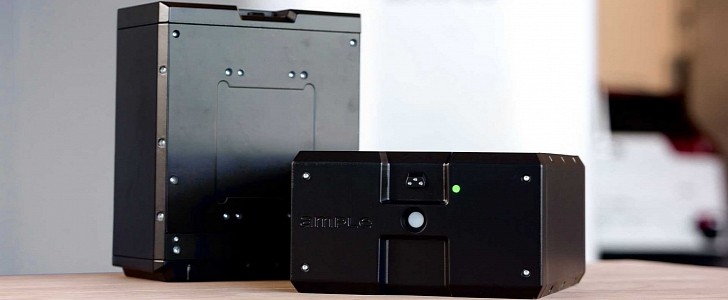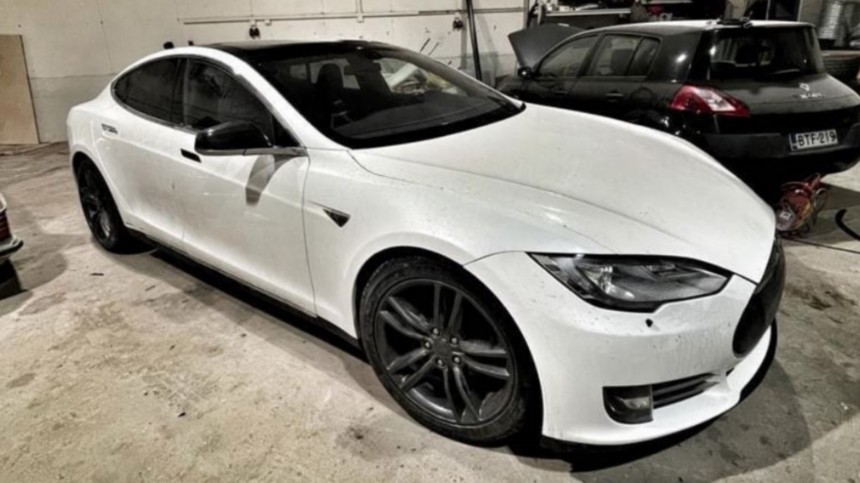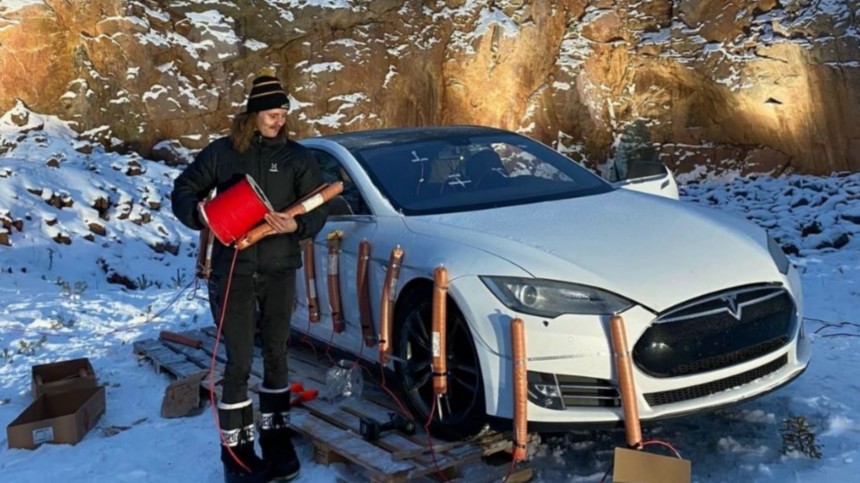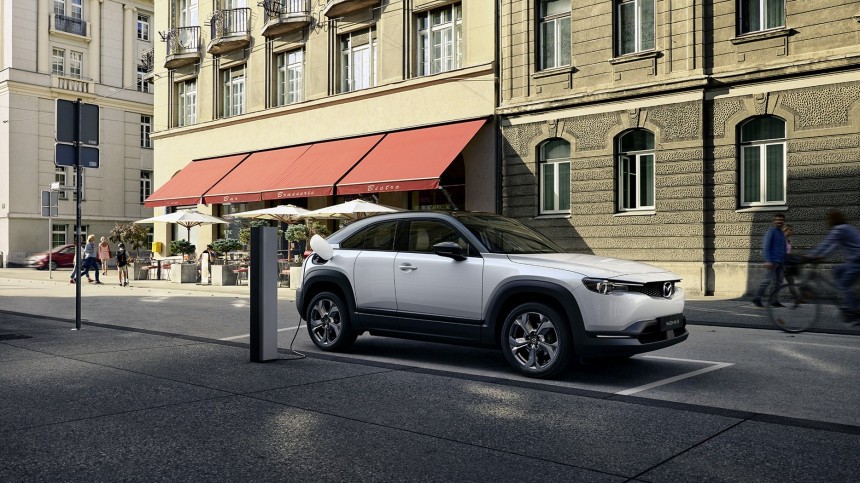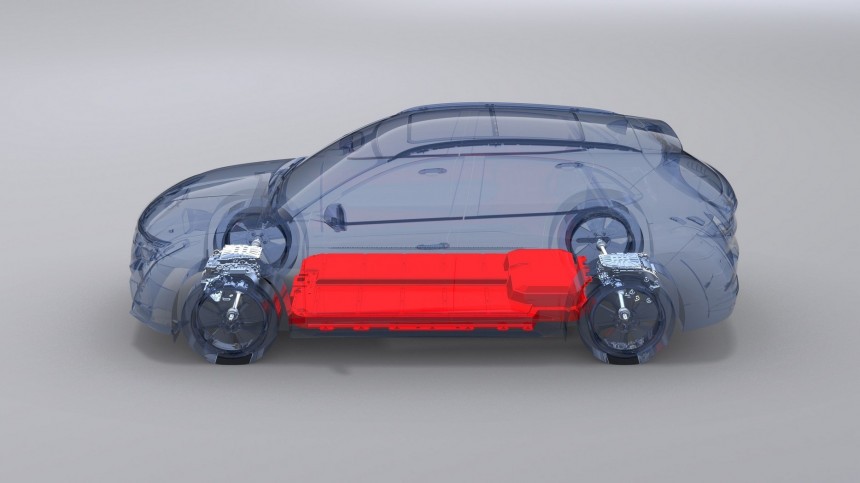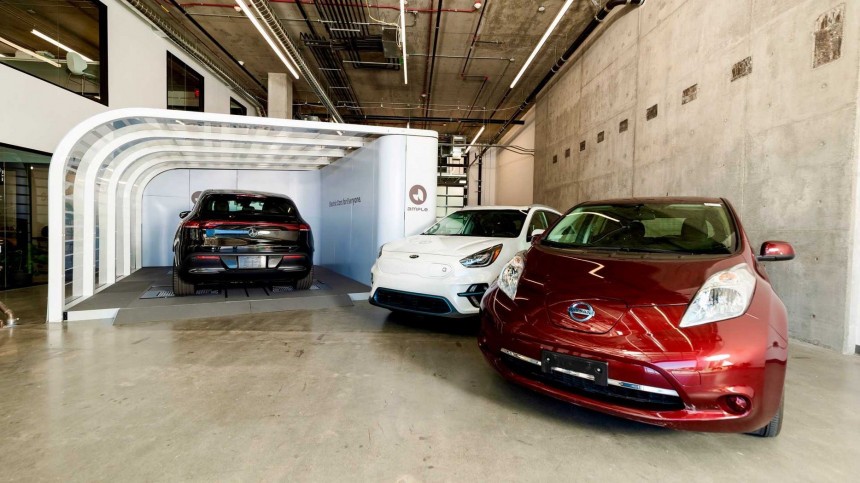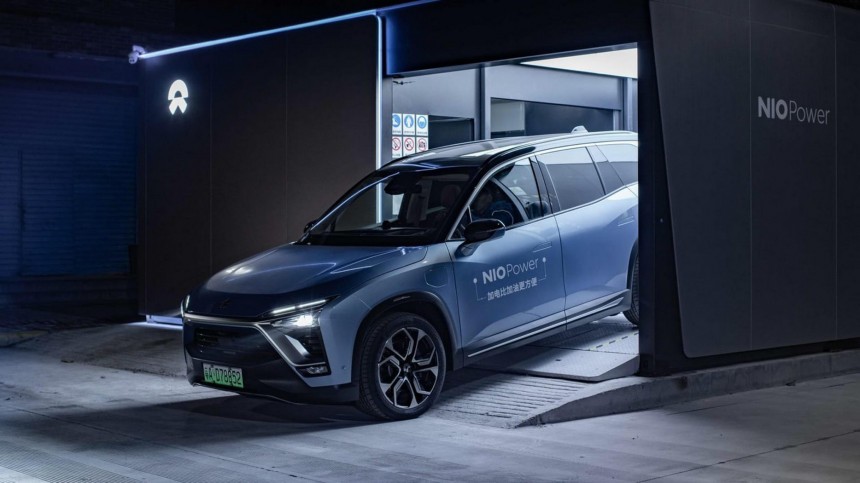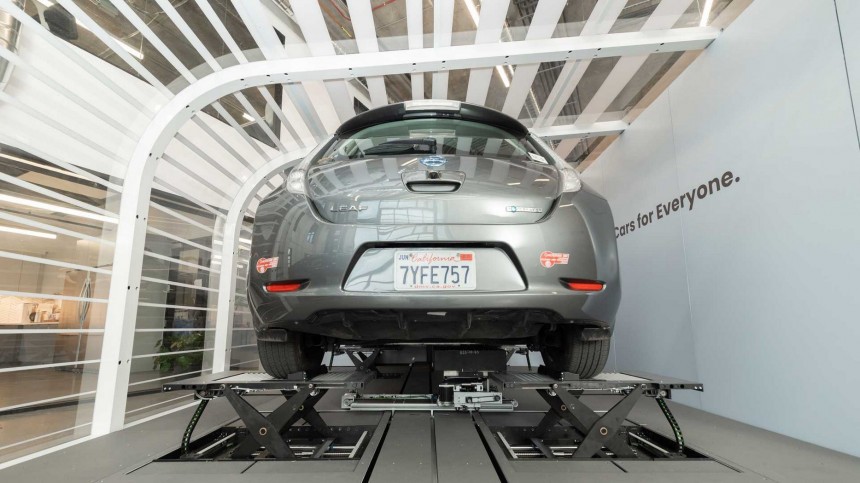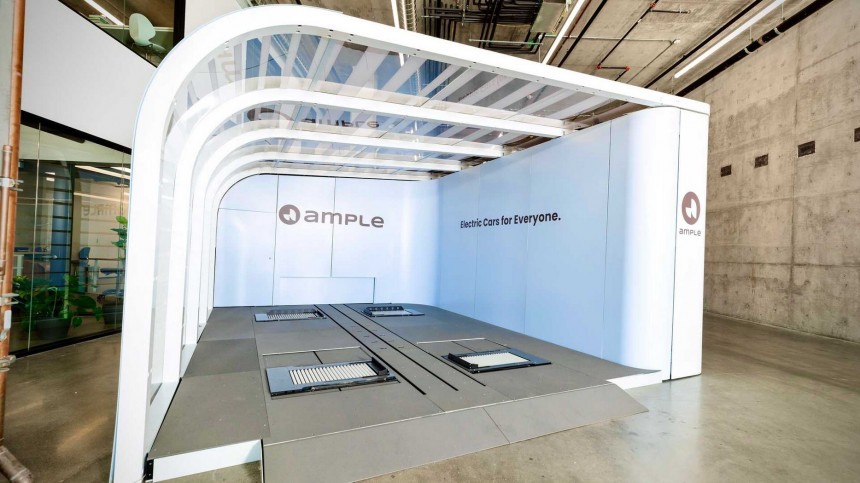Electric mobility may sound simple, but it is pretty far from it. A big battery pack offers more range, but most people will not use it most of the time. In road trips, it may allow them to travel further but will also demand that they spend more time charging, even at fast chargers – which are not good for EVs. The cost and mass of the battery pack add to that feeling of waste. Why spend a lot of money to buy a heavy battery pack that will take a longer time to charge? Battery module swapping address all that at once.
So far, the only company that we are aware of working on the concept is Ample, which led us to talk to their executives. With them, we have learned that the startup was conceived precisely with these matters in mind. Before we move into the idea, it is important to provide some context.
If you are not familiar with EVs, you may never have thought about the implications of the current cell technology. The fact is that it does not allow us to store much energy. That said, any electric vehicle willing to offer long ranges has to include a massive battery pack or invest heavily in aerodynamics and lightness to make the most of what they have. Even so, don't expect them to be smaller than 60 kWh, like the Lightyear One. And that's a lot.
According to EPA, 1 gallon (3.79 liters) of gas holds 33.7 kWh of energy. If you remember that the former 85-kWh battery pack on the Model S weighed 545 kilograms (1,201.5 pounds), batteries need all that mass to store what gasoline holds in 2.5 gallons (9.6 l). Since a liter of gasoline weighs 0.77 kg, that means 7.4 kg (16.3 lb), or 1.4% of what an 85-kWh battery pack weighs.
The Model S with the 85-kWh battery pack provided an EPA range of 265 miles (426 km). Imagine driving that far with 2.5 gallons of gasoline: that’s 106 MPG, or 44.4 km/l, or 2.25 l/100 km. The electric sedan weighed 4,647 lb (2,108 kg).
In terms of size, the Model S is equivalent to the Chrysler 300, which has an 18.5-gallon (70 liters) fuel tank, an EPA range of 426 miles, and a curb weight of 4,013 lb (1,820 kg). The Tesla would be able to travel much further if it weighed 634 lb (288 kg) less. However, EVs have already shown they can beat combustion-engined competitors in terms of efficiency even with that extra weight. Cost is a much bigger problem.
If you doubt it, you must remember the story of Tuomas Katainen, the Finnish Tesla owner that got famous after deciding to blow up his 2013 Model S. He did that because he would have to pay €20,000 ($21,634 at the current exchange rate) on a new battery pack to keep his EV working.
Although we have no information about which Model S it was, it is very likely that it had an 85-kWh battery pack. All others would be smaller and cheaper. If Tesla was charging €20,000 for a 60-kWh, 70-kWh, or 75-kWh battery pack, things would have been even worse than we could suppose.
Anyone in Katainen’s shoes would probably weep or try to recover their money by selling the car in pieces to other buyers in need of components. Unfortunately, there are quite a few that have already gone through similar situations.
Cases like this are probably what made Markus Duesmann tell Roadshow in February 2021 that EVs would eventually have smaller battery packs with less range. The Audi CEO believed that fast charging and a denser charging infrastructure would solve these two problems at once. He was wrong and right at the same time.
Wrong because fast charging is not a proper solution: it damages current batteries if they are too frequent. QuantumScape submitted a 2170 cell to the same C rates it applies to test its solid-state cells. The result was that “the cell degrades rapidly, falling below 80% of the initial discharge energy after only a dozen cycles, and at such high rates of charge, it carries a risk of catastrophic failure (explosion or fire).”
On the other hand, Duesmann was right because a smaller battery pack would indeed help EV adoption, making these cars much cheaper. Mazda bets more heavily on them. It says it does not want its electric cars to be much heavier than the ones with combustion engines and conceals the fact that they would also be very expensive.
These would be the reasons for the MX-30 to present such a small battery pack – 35.5 kWh or a bit more energy than a gallon of gasoline. The problem is that they would only be feasible with solid-state batteries or another technology breakthrough that allowed cells to have higher energy density and fast charge without the risk of an explosion or accelerated degradation. We’re still years away from that.
Even if these cells were already available, fast charging them from 10% of capacity to 80% takes at least 15 minutes. SES offers a hybrid solution that can be manufactured as easily as current cells and that goes from 10% to 90% of charge in 12 minutes. That’s twice as much as NIO takes to replace a depleted battery pack for a fully-charged one. And that brings another problem: having enough fast chargers available and a grid that can cope with them.
VinFast recently offered a solution for the high price of massive battery packs. It could be an alternative if it was not just a marketing stunt. Like Renault did with the ZOE, it created a battery pack subscription program (or leasing, as VinFast calls it in Europe) that allegedly excludes it from the vehicle’s final cost.
The catch is that the strategy will only last until the end of 2023. In other words, it is a way to attract customers to a brand that nobody had heard about until very recently. Apart from that, we have to consider the implications.
If someone stopped paying the subscription (or leasing), what would VinFast do? Remove only the battery and leave the car without it? It would be easy if it had a swappable battery pack, but that is not the case. The most probable solution would be to repossess the entire car, which is legally problematic if the customer has already paid for it. It is not as if you could buy just the car and pay for the energy you need, which is how ICE vehicles currently work – at least not with the current EV model.
It is here that swappable battery modules fit. Since the first company to credibly propose them was Ample, we will use the suggested model to explain how this could work. The startup developed modules the size of a shoebox that would fit any electric car, just like AAA batteries fit a remote control regardless of who sells them. To use these modules, the vehicles either have to be adapted or come from the factory with that compatibility.
Let’s suppose you only drive 20 miles (32 km) per day. With modules, you could choose to have that exact range or just a bit more for some safety margin. That would make your electric car lighter, giving you more range. You could either charge your car at home every day or go to an Ample station and swap them for charged ones. With fewer modules, you’d spend less time in the process.
Whenever you needed to travel, you could add more modules to your car. Let’s suppose you only need 2 to get the 20 miles you use every day. Ample says a compact EV can have about 10 modules, while a midsize car can get 16 to 20 modules. John de Souza, Ample’s co-founder and president, told autoevolution that “using fewer modules has no adverse impact versus using all the modules” because “the connectors and unfilled space are within the trays and are not exposed to the elements.”
Ample did not disclose how many kWh each of its modules currently provides because it wants to offer newer chemistries – with higher energy density – whenever they are available. The range they offer will always depend on the efficiency of the vehicles they equip.
If you buy only your EV and lease the swappable battery modules you need, you will spend a lot less than if you bought the battery pack with the vehicle. In the example we gave with the Tesla Model S, it could make the car €20,000 cheaper. We also have an example from NIO that demonstrates how much more affordable the EV could be if you did not have to buy the batteries.
The company is selling the seven-seater ES8 in Norway for NOK519,000 ($58,937 at the current exchange rate), but the final price raises to NOK528,900 ($60,061) due to a NOK9,900 ($1,124) fee for “shipping, delivery, and administrative costs.”
If you decide to buy the battery pack, the price increases from NOK160,000 ($18,169) to NOK688,900 ($78,230). If you just use NIO’s BaaS (Battery as a Service), you’ll end up paying NOK1,399 ($159) per month for the 75-kWh battery pack or NOK1,999 ($227) for the 100-kWh unit. That value could be lower with replaceable battery modules such as those used by Ample.
The startup is discussing its swappable battery modules with “five of the world’s largest automakers,” which means we may eventually see them in production cars. However, De Souza is currently eyeing fleets. He mentioned the benefits he believes the model can give them.
“Weight and efficiency are important and, when multiplied over a large number of EVs, would have a significant impact on reducing emissions. In addition, fleets (and individuals) can effectively subscribe to the amount of battery they need, which would allow them to align their battery expense with their mileage.”
For what the president mentions, Ample will allow customers to subscribe to the number of shoeboxes they need each month. If you used 10 per day in a compact car, you would get around 300 per month. If you only needed 2 on working days and 10 on weekends, you’d need around 120 modules monthly. That shows how the idea could spare resources and money: we'd need way less lithium, cobalt, nickel, and anything else currently in demand to make new cells. By renting just the amount you really need, you'd spare quite some cash. De Souza gave us another example of that.
"A municipal fleet vehicle may only be used 20 to 30 miles a day. Thus buying a car with a 200-mile (394 km) range would be unnecessarily expensive, and the fleet could save a few thousand dollars per vehicle by right-sizing the battery. With our solution, they can subscribe to the amount of battery they need without compromising their ability to get the full range of the vehicle on any given day by putting all the modules in."
The big advantage such a model presents is not only for new vehicles but especially for used ones. If you buy a 2013 EV, you will not have to worry about the health of the battery packs: just subscribe for the modules you need and get going. If the Finnish Model S had that possibility, Katainen would be probably still driving it. De Souza mentions another advantage.
“This also helps with the residual value of the vehicle as buying a big battery that is underutilized results in time-based depreciation of the battery, which reduces the residual value beyond the miles driven.”
The only bright point of having a vehicle with a very large battery pack pointed out by specialists is to use electric vehicles as part of the grid. In other words, they can work as massive mobile power banks and help keep the grid stable or provide backup power for their owners in emergency situations. Great idea apart from a detail: the burden that this puts on whoever drives these cars.
In a model where regular customers buy the cars and their battery packs, they bear all costs involved, including wearing them out in the process of storing and giving energy back to the grid. Ample’s business model uses the mobile swapping stations to perform that role and make money for the company that way. It makes more sense than inviting people that just want to drive to sell electricity.
If you are not familiar with EVs, you may never have thought about the implications of the current cell technology. The fact is that it does not allow us to store much energy. That said, any electric vehicle willing to offer long ranges has to include a massive battery pack or invest heavily in aerodynamics and lightness to make the most of what they have. Even so, don't expect them to be smaller than 60 kWh, like the Lightyear One. And that's a lot.
According to EPA, 1 gallon (3.79 liters) of gas holds 33.7 kWh of energy. If you remember that the former 85-kWh battery pack on the Model S weighed 545 kilograms (1,201.5 pounds), batteries need all that mass to store what gasoline holds in 2.5 gallons (9.6 l). Since a liter of gasoline weighs 0.77 kg, that means 7.4 kg (16.3 lb), or 1.4% of what an 85-kWh battery pack weighs.
The Model S with the 85-kWh battery pack provided an EPA range of 265 miles (426 km). Imagine driving that far with 2.5 gallons of gasoline: that’s 106 MPG, or 44.4 km/l, or 2.25 l/100 km. The electric sedan weighed 4,647 lb (2,108 kg).
If you doubt it, you must remember the story of Tuomas Katainen, the Finnish Tesla owner that got famous after deciding to blow up his 2013 Model S. He did that because he would have to pay €20,000 ($21,634 at the current exchange rate) on a new battery pack to keep his EV working.
Although we have no information about which Model S it was, it is very likely that it had an 85-kWh battery pack. All others would be smaller and cheaper. If Tesla was charging €20,000 for a 60-kWh, 70-kWh, or 75-kWh battery pack, things would have been even worse than we could suppose.
Anyone in Katainen’s shoes would probably weep or try to recover their money by selling the car in pieces to other buyers in need of components. Unfortunately, there are quite a few that have already gone through similar situations.
Wrong because fast charging is not a proper solution: it damages current batteries if they are too frequent. QuantumScape submitted a 2170 cell to the same C rates it applies to test its solid-state cells. The result was that “the cell degrades rapidly, falling below 80% of the initial discharge energy after only a dozen cycles, and at such high rates of charge, it carries a risk of catastrophic failure (explosion or fire).”
On the other hand, Duesmann was right because a smaller battery pack would indeed help EV adoption, making these cars much cheaper. Mazda bets more heavily on them. It says it does not want its electric cars to be much heavier than the ones with combustion engines and conceals the fact that they would also be very expensive.
These would be the reasons for the MX-30 to present such a small battery pack – 35.5 kWh or a bit more energy than a gallon of gasoline. The problem is that they would only be feasible with solid-state batteries or another technology breakthrough that allowed cells to have higher energy density and fast charge without the risk of an explosion or accelerated degradation. We’re still years away from that.
VinFast recently offered a solution for the high price of massive battery packs. It could be an alternative if it was not just a marketing stunt. Like Renault did with the ZOE, it created a battery pack subscription program (or leasing, as VinFast calls it in Europe) that allegedly excludes it from the vehicle’s final cost.
The catch is that the strategy will only last until the end of 2023. In other words, it is a way to attract customers to a brand that nobody had heard about until very recently. Apart from that, we have to consider the implications.
It is here that swappable battery modules fit. Since the first company to credibly propose them was Ample, we will use the suggested model to explain how this could work. The startup developed modules the size of a shoebox that would fit any electric car, just like AAA batteries fit a remote control regardless of who sells them. To use these modules, the vehicles either have to be adapted or come from the factory with that compatibility.
Let’s suppose you only drive 20 miles (32 km) per day. With modules, you could choose to have that exact range or just a bit more for some safety margin. That would make your electric car lighter, giving you more range. You could either charge your car at home every day or go to an Ample station and swap them for charged ones. With fewer modules, you’d spend less time in the process.
Ample did not disclose how many kWh each of its modules currently provides because it wants to offer newer chemistries – with higher energy density – whenever they are available. The range they offer will always depend on the efficiency of the vehicles they equip.
If you buy only your EV and lease the swappable battery modules you need, you will spend a lot less than if you bought the battery pack with the vehicle. In the example we gave with the Tesla Model S, it could make the car €20,000 cheaper. We also have an example from NIO that demonstrates how much more affordable the EV could be if you did not have to buy the batteries.
The company is selling the seven-seater ES8 in Norway for NOK519,000 ($58,937 at the current exchange rate), but the final price raises to NOK528,900 ($60,061) due to a NOK9,900 ($1,124) fee for “shipping, delivery, and administrative costs.”
The startup is discussing its swappable battery modules with “five of the world’s largest automakers,” which means we may eventually see them in production cars. However, De Souza is currently eyeing fleets. He mentioned the benefits he believes the model can give them.
“Weight and efficiency are important and, when multiplied over a large number of EVs, would have a significant impact on reducing emissions. In addition, fleets (and individuals) can effectively subscribe to the amount of battery they need, which would allow them to align their battery expense with their mileage.”
"A municipal fleet vehicle may only be used 20 to 30 miles a day. Thus buying a car with a 200-mile (394 km) range would be unnecessarily expensive, and the fleet could save a few thousand dollars per vehicle by right-sizing the battery. With our solution, they can subscribe to the amount of battery they need without compromising their ability to get the full range of the vehicle on any given day by putting all the modules in."
The big advantage such a model presents is not only for new vehicles but especially for used ones. If you buy a 2013 EV, you will not have to worry about the health of the battery packs: just subscribe for the modules you need and get going. If the Finnish Model S had that possibility, Katainen would be probably still driving it. De Souza mentions another advantage.
“This also helps with the residual value of the vehicle as buying a big battery that is underutilized results in time-based depreciation of the battery, which reduces the residual value beyond the miles driven.”
In a model where regular customers buy the cars and their battery packs, they bear all costs involved, including wearing them out in the process of storing and giving energy back to the grid. Ample’s business model uses the mobile swapping stations to perform that role and make money for the company that way. It makes more sense than inviting people that just want to drive to sell electricity.
